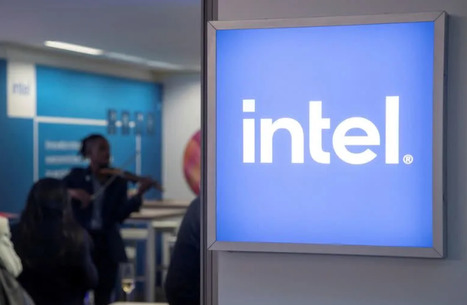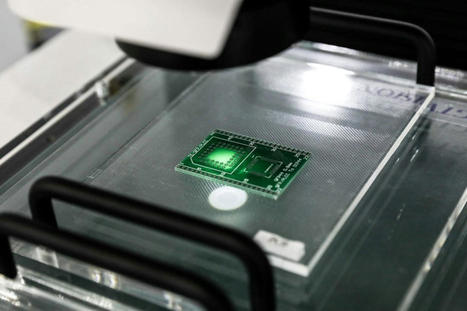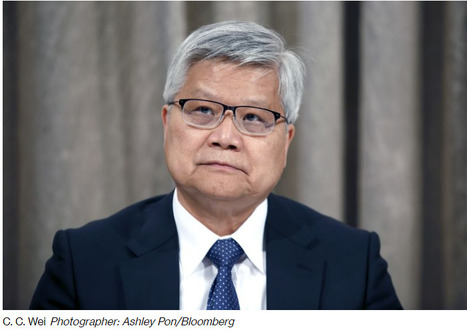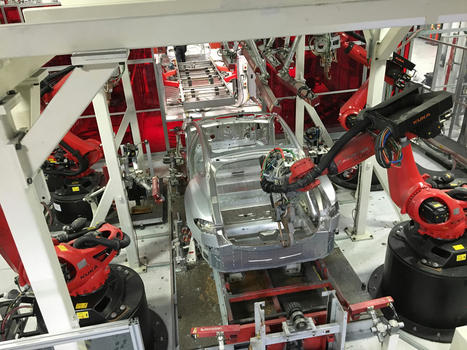Get Started for FREE
Sign up with Facebook Sign up with X
I don't have a Facebook or a X account
 Your new post is loading... Your new post is loading...
 Your new post is loading... Your new post is loading...

Richard Platt's curator insight,
October 21, 2022 9:17 PM
Veteran actor Mark Hamill said in an interview that he has sent at least 500 drones to Ukraine through the country’s fundraising platform, as Ukraine’s ongoing conflict with Russia enters its ninth month. During an appearance on Bloomberg Radio’s “Sound On”, Hamill, widely known for his role as Luke Skywalker in the acclaimed “Star Wars” film franchise, said “Very simply: Ukraine needs drones. They define war outcomes, they protect their land, their people, they monitor the border, they’re eyes in the sky,” Hamill said in a radio interview Thursday. In a statement, Hamill expressed his gratitude for joining the initiative, saying this is the best time for everyone to come together and help Ukrainians defeat Russia in the ongoing conflict. “In this long and unequal fight, Ukraine needs continuous additional support. That’s why I was honored President Zelenskyy asked me to become an ambassador for the Army of Drones,” Hamill said in his statement. ” I know for certain that Ukrainians need drones to protect their land, their freedom and the values of the entire democratic world. Right now is the best time for everyone to come together and help Ukraine stand up in this war with the evil empire.". “I was really shocked because they give me these updates at least 2 or 3 times a week about what’s going on and they said they’ve received over 500 drones since I started this,” Hamill concluded. Ukrainian President Volodymyr Zelensky announced last month that the 71-year-old actor had been named an ambassador for the country’s fundraising platform UNITED24’s “Army of Drones“ project. ” United24 is an initiative that provides for the regular procurement of drones, their repair and prompt replacement, as well as pilot training for military forces. Actor and musician Barbra Streisand also joined the initiative as an ambassador, another of many celebrities who have used their platforms to lend support to Ukraine in its conflict with Russia.

Richard Platt's curator insight,
October 21, 2022 9:24 PM
Imagine if there were a robotic fish that filtered microplastic particles out of the water as it swam. Well, now there is one, and it's the physical version of the winning concept in the first-ever Natural Robotics Contest. The University of Surrey's Natural Robots Contest invited members of the public to submit their ideas for animal- or plant-inspired robots capable of performing activities that would help the world. The winning entry turned out to be the plastic-collecting Robo-fish, designed by chemistry undergrad Eleanor Mackintosh – who is coincidentally a University of Surrey student. The robot swims by flapping its tail, holding its mouth wide open to collect water (and microplastics) in an internal cavity as it does so. Once that cavity is full, the bot closes its mouth, opens its louvre-like gill flaps, and pushes the water out through those flaps by raising the floor of the cavity. A fine mesh attached to the gill flaps allows the water to pass through, but captures the plastic particles. In its current physical form, the 50-cm (19.7-in)-long Robo-fish collects particles as small as 2 millimeters. It also sports onboard sensors to monitor turbidity and underwater light levels, plus it utilizes an IMU (inertial measurement unit) to track its movements within the water. Oh yes, and it glows in the dark.

Richard Platt's curator insight,
October 19, 2022 11:27 AM
Russia has turned to China as a source of semiconductors due to sanctions cutting off supplies from elsewhere, but a large percentage of the chips being imported simply don't work. Up to 40% of the semiconductors being sold to Russia simply don't work, as The Register reports, the chip failure rate is as high as 40% according to Russian national daily newspaper Kommersant. These chips are being purchased on the gray market by Russian electronics manufacturers from Chinese sellers. And it seems those sellers are taking advantage of the situation to dump broken parts in Russia while making a profit. The Chinese government has attempted to remain neutral with regards to Russia's invasion and subsequent war with Ukraine. However, that hasn't stopped some Chinese businesses and reseller spotting a money-making opportunity with ~ 0 risk because Russian customers simply have nowhere else to go for their components. Few will feel sorry for Russia being taken advantage of like this, especially when you consider the government has already turned to scavenging dishwasher chips in a desperate bid to fix its tanks. These faulty Chinese chips may have ended up inside military gear had they worked. |

Richard Platt's curator insight,
October 21, 2022 9:08 PM
Imagine if there were a robotic fish that filtered microplastic particles out of the water as it swam. Well, now there is one, and it's the physical version of the winning concept in the first-ever Natural Robotics Contest. The University of Surrey's Natural Robots Contest invited members of the public to submit their ideas for animal- or plant-inspired robots capable of performing activities that would help the world. The winning entry turned out to be the plastic-collecting Robo-fish, designed by chemistry undergrad Eleanor Mackintosh – who is coincidentally a University of Surrey student. The robot swims by flapping its tail, holding its mouth wide open to collect water (and microplastics) in an internal cavity as it does so. Once that cavity is full, the bot closes its mouth, opens its louvre-like gill flaps, and pushes the water out through those flaps by raising the floor of the cavity. A fine mesh attached to the gill flaps allows the water to pass through, but captures the plastic particles. In its current physical form, the 50-cm (19.7-in)-long Robo-fish collects particles as small as 2 millimeters. It also sports onboard sensors to monitor turbidity and underwater light levels, plus it utilizes an IMU (inertial measurement unit) to track its movements within the water. Oh yes, and it glows in the dark.

Richard Platt's curator insight,
October 21, 2022 9:22 PM
Veteran actor Mark Hamill said in an interview that he has sent at least 500 drones to Ukraine through the country’s fundraising platform, as Ukraine’s ongoing conflict with Russia enters its ninth month. During an appearance on Bloomberg Radio’s “Sound On”, Hamill, widely known for his role as Luke Skywalker in the acclaimed “Star Wars” film franchise, said “Very simply: Ukraine needs drones. They define war outcomes, they protect their land, their people, they monitor the border, they’re eyes in the sky,” Hamill said in a radio interview Thursday. In a statement, Hamill expressed his gratitude for joining the initiative, saying this is the best time for everyone to come together and help Ukrainians defeat Russia in the ongoing conflict. “In this long and unequal fight, Ukraine needs continuous additional support. That’s why I was honored President Zelenskyy asked me to become an ambassador for the Army of Drones,” Hamill said in his statement. ” I know for certain that Ukrainians need drones to protect their land, their freedom and the values of the entire democratic world. Right now is the best time for everyone to come together and help Ukraine stand up in this war with the evil empire.". “I was really shocked because they give me these updates at least 2 or 3 times a week about what’s going on and they said they’ve received over 500 drones since I started this,” Hamill concluded. Ukrainian President Volodymyr Zelensky announced last month that the 71-year-old actor had been named an ambassador for the country’s fundraising platform UNITED24’s “Army of Drones“ project.

Richard Platt's curator insight,
October 19, 2022 11:28 AM
Russia has turned to China as a source of semiconductors due to sanctions cutting off supplies from elsewhere, but a large percentage of the chips being imported simply don't work. Up to 40% of the semiconductors being sold to Russia simply don't work, as The Register reports, the chip failure rate is as high as 40% according to Russian national daily newspaper Kommersant. These chips are being purchased on the gray market by Russian electronics manufacturers from Chinese sellers. And it seems those sellers are taking advantage of the situation to dump broken parts in Russia while making a profit. The Chinese government has attempted to remain neutral with regards to Russia's invasion and subsequent war with Ukraine. However, that hasn't stopped some Chinese businesses and reseller spotting a money-making opportunity with ~ 0 risk because Russian customers simply have nowhere else to go for their components. Few will feel sorry for Russia being taken advantage of like this, especially when you consider the government has already turned to scavenging dishwasher chips in a desperate bid to fix its tanks. These faulty Chinese chips may have ended up inside military gear had they worked. |































Nearly a dozen people, including five Russian nationals and two oil brokers from Venezuela, were arrested and charged in a scheme to send American military technology to Russia, some of which was allegedly found on battlefields in Ukraine, according to the U.S. Justice Department. Federal prosecutors, with help from the department’s Task Force KleptoCapture, revealed two separate indictments Oct. 19. The task force was created earlier this year to enforce sanctions against the Russian elite. “As I have said, our investigators and prosecutors will be relentless in their efforts to identify, locate, and bring to justice those whose illegal acts undermine the rule of law and enable the Russian regime to continue its unprovoked invasion of Ukraine,” Attorney General Merrick Garland said in a release. The charges come as the U.S. looks to crack down on Russia and its allies while the war in Ukraine continues into its 8th month. The defendants are charged with an array of counts, including conspiracy to defraud the U.S. If convicted, they could face more than 30 years in prison. In the first case, filed in the Eastern District of New York, Russian nationals Yury Orekhov and Svetlana Kuzurgasheva are charged with creating shell companies to illegally send military tech and oil to U.S.-sanctioned Russian buyers. Some of the electronic components obtained in the scheme were found in Russian weapons platforms seized in Ukraine. Additionally, Orekhov and Artem Uss, who is the son of a Russian governor, allegedly used the fake business — with help from oil brokers Juan Fernando Serrano Ponce and Juan Carlos Soto — to smuggle hundreds of millions of barrels of oil to Russia and China from Venezuela.